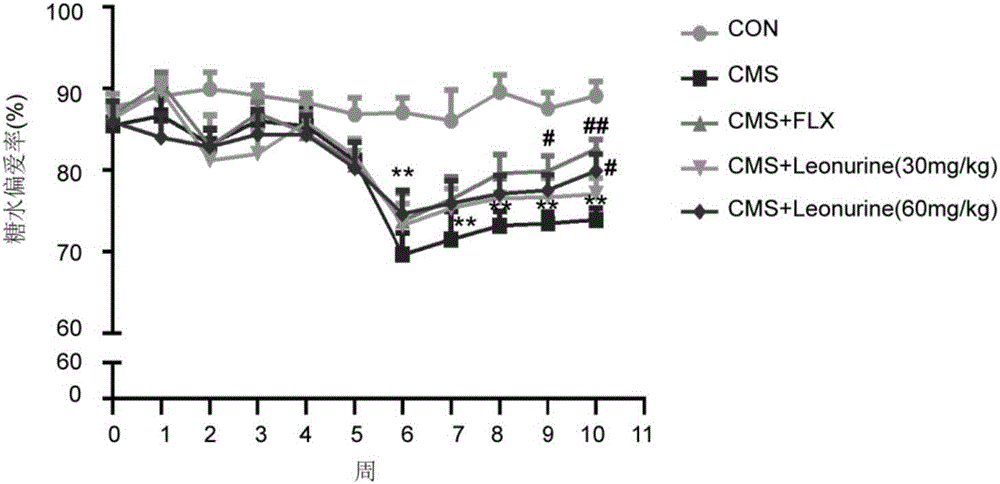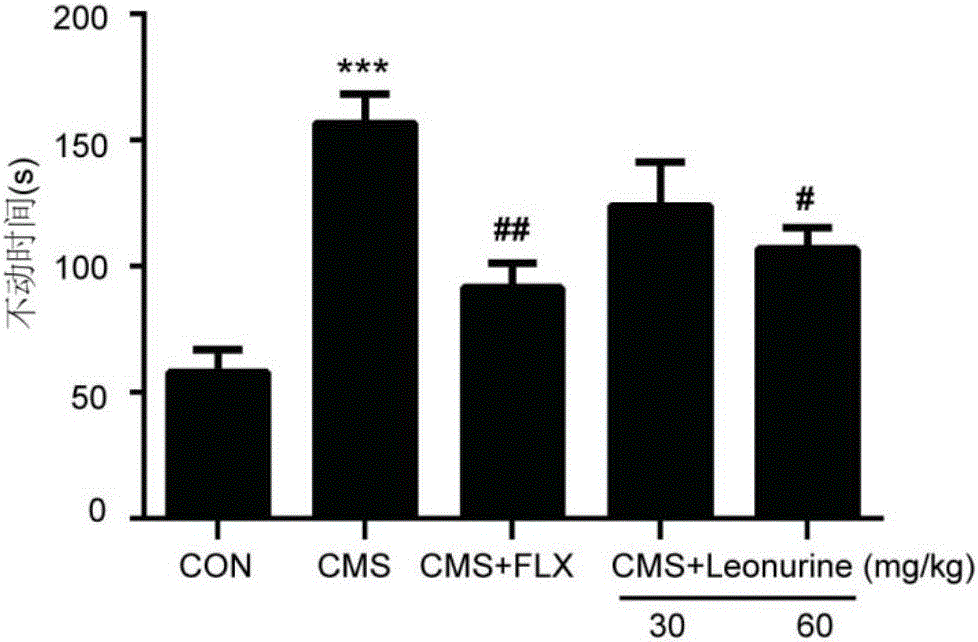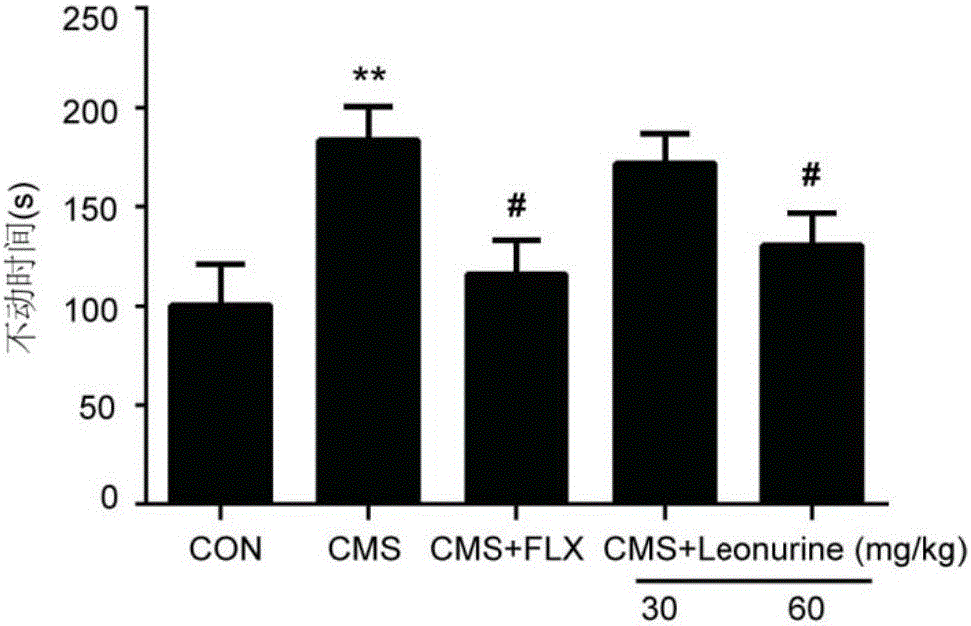Novel application of leonurine
A technology for leonurine and depression is applied in the application field of leonurine in the preparation of drugs for treating or preventing depression, and achieves the effect of high safety
- Summary
- Abstract
- Description
- Claims
- Application Information
AI Technical Summary
Problems solved by technology
Method used
Image
Examples
Embodiment 1
[0038] Example 1: Improvement effect of motherwortine on depression-like behavior in CMS mice
[0039] The present invention adopts the CMS depression model recognized by the international academic circle to prepare rodent depression. Male C57BL / 6J mice, weighing 18-22 g, aged 2-3 months, were purchased from the Comparative Medicine Center of Yangzhou University (animal production license number is SCXR (Su) 20120004). After one week of adaptive feeding, the mice in the normal control group ate and drank normally without any stimulation, and the stressed mice received two or three random, mild and unpredictable stimuli every day until depression-like symptoms appeared. The CMS method includes a series of unpredictable chronic mild stresses including: tail pinching, circadian reversal, 45° inclined cage (6h), restraint (12h), wet cage (12h), empty cage (10-14h), water deprivation (15h), pairing (2h), changing bedding, strobe lighting for 12h, etc. The same stimulus cannot be g...
Embodiment 2
[0048] Example 2: Effects of Leonurine on Monoamine Neurotransmitters in the Brain of CMS Mice
[0049] In this part, the CMS depression model described in Example 1 was used. Up to the sixth week, leonurine (30 mg / kg / day or 60 mg / kg / day) was given by intragastric administration for 4 weeks. 1h after the last administration, the mice were deeply anesthetized, the brain tissue was quickly peeled off, the hippocampus and prefrontal cortex were separated, and the homogenate (0.1M HClO 4 , 0.1mM EDTA) homogenate, centrifuge (20,000rpm, 30min), take the supernatant, and Thermo ultimate 3000 high performance liquid chromatography system (HPLC) detects the monoamine neurotransmitter 5-hydroxytryptamine (5-HT), Norepinephrine (NE) and dopamine (DA) levels.
[0050] The results of the determination of monoamine transmitters in the hippocampus (Table 3, attached Figure 4 As shown in A-4C), compared with the normal control group, the contents of 5-HT, NE, and DA in CMS-stressed mice d...
Embodiment 3
[0056] Example 3: Effects of Leonurine on Neurons and Glial Cells in the Brain of CMS Mice
[0057] In this part, the CMS depression model described in Example 1 was adopted, and until the sixth week, leonurine (30 mg / kg / day or 60 mg / kg / day) was given by intragastric administration for 4 weeks. 1 hour after the last administration, the mice were deeply anesthetized, perfused with 4% paraformaldehyde, and dehydrated with gradient sucrose. The brain tissue was frozen and sectioned, and the hippocampal brain slices were selected according to the brain atlas for Nissl staining to observe the morphology and structure of hippocampal neurons; in addition, at 4 % (mass percentage) after paraformaldehyde perfusion, the isolated hippocampus was fixed in 2.5% (mass percentage) glutaraldehyde, the electron microscope specimen was prepared, and the ultrastructure of the hippocampal neurons was observed under the transmission electron microscope; the immunofluorescence method was used to det...
PUM
 Login to View More
Login to View More Abstract
Description
Claims
Application Information
 Login to View More
Login to View More - R&D Engineer
- R&D Manager
- IP Professional
- Industry Leading Data Capabilities
- Powerful AI technology
- Patent DNA Extraction
Browse by: Latest US Patents, China's latest patents, Technical Efficacy Thesaurus, Application Domain, Technology Topic, Popular Technical Reports.
© 2024 PatSnap. All rights reserved.Legal|Privacy policy|Modern Slavery Act Transparency Statement|Sitemap|About US| Contact US: help@patsnap.com










